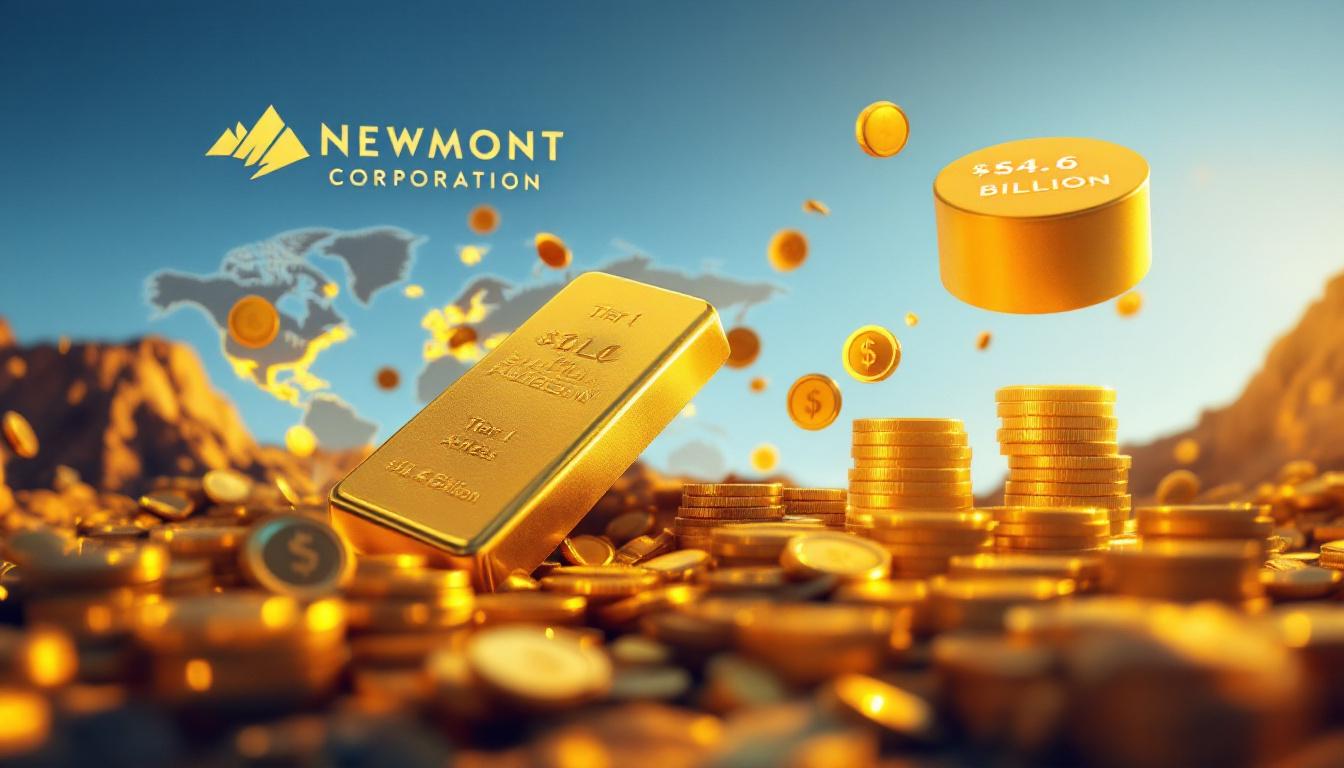Trading in the Magnesium Market: Price Trends, Analysis, and Investment Opportunities
Current Trends in the Magnesium Market
The magnesium market has been experiencing notable price adjustments in recent weeks, with the Fugu region (a key production hub in Shaanxi Province, China) reporting prices between 16,150-16,300 yuan/mt as of mid-July 2025. This represents a day-over-day decrease of 50 yuan/mt from the previous trading session, indicating some downward pressure in the short term.
Despite this downward trend, major producers have maintained firm quotations at the upper range (16,300 yuan/mt), even as actual transactions occur predominantly at the lower end of the spectrum (16,150-16,200 yuan/mt). This price divergence highlights a strategic stance by established manufacturers to preserve market value despite increased availability of lower-priced inventory.
"Most producers operate on scheduled production, with tight spot supply in main producing regions. Leading firms have demonstrated strong resistance to lowering prices, creating solid support at the current price floor." — Senior Sales Executive, Major Magnesium Smelter
Market indicators reveal sluggish transaction volumes characterized primarily by just-in-time procurement strategies. Buyers currently demonstrate a clear preference for lower-priced options when available, while producers continue to resist further price reductions—creating a tense equilibrium in the marketplace.
Supply and Demand Dynamics Affecting Magnesium Prices
Supply-Side Factors
The supply landscape for magnesium remains relatively disciplined, with most manufacturers adhering to planned production schedules rather than increasing output. This strategic approach has maintained relatively tight spot supply in primary production regions, particularly in Shaanxi Province, which accounts for approximately 60% of China's total magnesium output.
Production capacity utilization has been carefully adjusted to match current demand levels, preventing the market from experiencing significant oversupply conditions that could trigger more dramatic price declines. The energy-intensive nature of magnesium production—with coal-fired electricity representing 35-40% of total production costs—has further incentivized producers to maintain pricing discipline rather than chase volume.
Demand-Side Market Analysis
The demand side of the equation currently lacks significant momentum for price increases. End-user sectors, including aluminum alloying (which constitutes 45% of total magnesium consumption) and die-casting applications (35% of consumption), are demonstrating cautious procurement patterns focused on immediate needs rather than inventory building.
This short-term purchasing strategy has become particularly pronounced during mid-week trading sessions, which typically show reduced activity compared to early-week or end-of-week periods. Regional demand variations exist, with consumption primarily concentrated in industrial centers where automotive, aerospace, and other lightweight manufacturing operations are based.
| End-Use Sector | Percentage of Magnesium Consumption |
|----------------|-------------------------------------|
| Aluminum alloying | 45% |
| Die casting | 35% |
| Steel desulfurization | 13% |
| Other (including titanium reduction) | 7% |
Effective Trading Strategies in Today's Magnesium Market
Buying Approaches
For magnesium buyers, the current market environment presents specific strategic opportunities. Timing considerations suggest potential advantages in just-in-time purchasing rather than building significant inventory positions, particularly given the relatively stable price floor maintained by producer discipline.
Price negotiation tactics that may prove effective include targeting smaller producers with potential liquidity needs, who may offer prices closer to the lower end of the current range (16,150 yuan/mt). However, relationship maintenance with established suppliers remains critical for ensuring supply security in a market with tight spot availability.
Contract structure recommendations:
- Short-term agreements (1-3 months) preferable in current environment
- Inclusion of volume flexibility clauses to accommodate demand uncertainty
- Price adjustment mechanisms tied to validated industry benchmarks
- Delivery scheduling options to minimize carrying costs
Risk management becomes increasingly important in a market showing signs of potential volatility. Hedging strategies using available instruments, including Shanghai Futures Exchange (SHFE) magnesium contracts (standardized at 10 mt/lot), can provide price protection while maintaining physical supply relationships.
Selling Strategies for Producers
From the producer perspective, maintaining pricing discipline has emerged as a critical strategy despite downward market pressure. Leading manufacturers have demonstrated a commitment to firm quotations, particularly at the 16,300 yuan/mt level, even as transaction volumes have temporarily suffered.
Inventory management has become increasingly strategic, with careful release of supply to support price levels while maintaining customer relationships. This balancing act requires sophisticated forecasting capabilities and flexible production scheduling to avoid either oversupply or critical shortages.
"In the current market environment, prioritizing regular buyers with consistent volume commitments ensures minimal price erosion while maintaining critical plant utilization rates." — SMM Market Analysis, July 2025
Value-added services have gained importance as a competitive differentiator, with producers offering enhanced delivery flexibility, quality assurance programs, and technical support to justify premium pricing in a challenging market.
Magnesium Market Comparison to Other Metals
Correlation with Other Metal Markets
The magnesium market demonstrates interesting correlational relationships with other metal sectors. Its closest companion is the aluminum market, with a correlation coefficient of 0.82 over a five-year monthly analysis. This strong relationship stems from aluminum alloying representing the largest consumption category for magnesium.
The silicon market shows similar production cost pressures to magnesium, particularly regarding energy inputs, as both rely heavily on coal-powered electricity in primary Chinese production regions. However, magnesium exhibits a distinctly different pattern compared to rare earth elements, which typically display significantly higher price volatility.
When compared to base metals like copper and nickel, magnesium demonstrates notably lower volatility. While copper price insights might experience daily price movements averaging 0.8%, magnesium typically sees more modest 0.3% daily fluctuations—highlighting its relative stability as an industrial metal.
Comparative Price Analysis
Historical price performance over the past five years reveals magnesium's distinctive behavior pattern. While major industrial metals experienced significant price swings during the post-pandemic recovery period, magnesium demonstrated more contained movements due to its concentrated production base and disciplined supply management.
| Metal | 5-Year Price Volatility | Production Concentration | Energy Cost Component |
|-------|-------------------------|--------------------------|------------------------|
| Magnesium | 8.5% | High (China 85%) | 35-40% |
| Aluminum | 14.3% | Medium | 20-25% |
| Copper | 18.7% | Low | 15-20% |
| Nickel | 24.2% | Medium | 25-30% |
Seasonal patterns differ significantly from major industrial metals, with magnesium typically experiencing stronger demand in Q2 and Q3 when manufacturing activity peaks, while Q1 and Q4 often see softer markets. This cyclicality is driven primarily by the automotive and construction sectors' annual production schedules.
Production cost influences vary substantially across metal sectors. While all industrial metals face energy input pressures, magnesium's particularly high energy intensity (approximately 35-40% of total production costs) makes it especially sensitive to electricity rate fluctuations in key production regions.
Technical Indicators for Magnesium Trading
Price Chart Analysis
Technical analysis of magnesium price movements reveals strong support levels at 16,150 yuan/mt, which has functioned effectively as a price floor during recent trading sessions. Resistance points have formed at the 16,300 yuan/mt level, creating a defined trading range that has contained price action in the near term.
Moving averages currently show prices testing short-term averages, suggesting a potential inflection point in the weeks ahead. The 20-day moving average has flattened at approximately 16,250 yuan/mt, while the 50-day average continues to slope gently upward at 16,180 yuan/mt, creating a potential support zone.
Volume indicators have signaled market hesitation, with reduced transaction volumes during recent price declines suggesting limited selling pressure despite the downward price movement. This divergence between price and volume often precedes stabilization or potential reversal in technical trading patterns.
Market Sentiment Metrics
Producer confidence remains relatively high despite recent price pressures, with the SMM Producer Sentiment Index registering 62 out of 100 in the most recent survey. This indicates continued commitment to price discipline rather than volume-based competition, supporting the current price floor.
Buyer sentiment has shifted toward caution, with procurement officers reporting increased price sensitivity and reduced forward purchasing. The SMM Buyer Sentiment Index has declined to 48 out of 100, reflecting this more conservative approach to inventory management.
Inventory positions among major market participants remain strategically balanced, with producers maintaining sufficient stocks to service regular customers while avoiding oversupply conditions. Meanwhile, traders and end-users have kept inventories lean, reflecting the just-in-time procurement strategy currently dominating the market.
Forward curve analysis suggests expectations for range-bound movement in the near term, with futures contracts for September delivery trading at minimal premium to spot prices—indicating limited expectations for significant upward price movement in the coming months.
Factors Influencing Future Magnesium Prices
Short-Term Price Outlook
The expected price range for magnesium in the coming weeks remains tightly bound between 16,100-16,300 yuan/mt, with limited catalysts for significant movement in either direction. The primary potential market catalyst would be unexpected demand signals from downstream sectors, particularly the automotive industry which consumes substantial volumes through both aluminum alloying and direct die-casting applications.
Supply adjustments are likely to remain measured, with producer discipline in maintaining production schedules rather than chasing volume at the expense of price. The tight spot supply situation in major producing regions provides structural support for current price levels despite temporary demand softness.
Trading volume projections suggest continued subdued activity in the near term, with the traditional summer slowdown in industrial activity potentially extending the current cautious market sentiment. However, September typically brings increased procurement activity as manufacturers prepare for Q4 production schedules.
Long-Term Market Fundamentals
Industrial application growth represents a significant long-term driver for magnesium demand, with expanding use in lightweight manufacturing across automotive, aerospace, and consumer electronics sectors. The ongoing push for vehicle weight reduction to improve fuel efficiency and extend electric vehicle range continues to support magnesium consumption growth at approximately 4.2% CAGR.
Production technology developments may impact cost structures over the medium term, with increasing investment in energy-efficient smelting processes aimed at reducing the substantial electricity component of production costs. These advances could potentially alter the competitive landscape by changing the relative cost positions of different production regions.
"Environmental compliance costs may raise prices by 3-5% in 2026 as carbon policies tighten, particularly affecting coal-dependent production regions in China." — SMM Sustainability Outlook, June 2025
Environmental regulation effects represent both a challenge and opportunity for the magnesium sector. China's "Dual Carbon" policy, which mandates a 20% reduction in energy intensity for metal smelters by 2030, will increase compliance costs for producers but may also support price levels by constraining supply growth.
Global trade dynamics continue to evolve, with potential shifts in import/export balances as consuming regions like Europe and North America weigh supply security concerns against price considerations. Recent WTO steel tariff exemptions have already triggered increased magnesium demand for desulfurization applications in European steel production.
Investment Opportunities in the Magnesium Market
Investment Opportunity Assessment
Direct market participation through physical trading in the magnesium market represents one avenue for investor exposure to the magnesium sector. This approach requires specialized knowledge of quality specifications, logistics, and established relationships with producers and consumers—making it primarily suitable for specialized commodity trading firms rather than general investors.
Derivative exposure offers a more accessible option, with financial instruments including SHFE magnesium futures contracts providing standardized exposure without the complexities of physical handling. Open interest in these contracts has increased 12% year-over-year, indicating growing market participation.
Producer equity investments provide another indirect approach, with public companies involved in magnesium production offering exposure to sector fundamentals. These investments combine magnesium price exposure with operational execution factors and potentially broader diversification if the companies operate across multiple metal markets.
The risk-reward profile for magnesium investments compares favorably to certain alternative commodities, particularly in terms of volatility metrics. The 30-day historical volatility of 8.5% contrasts with the broader S&P GSCI Industrial Metals index at 14.3%, suggesting potentially lower risk for comparable returns.
Risk Management Strategies
Hedging techniques for magnesium exposure have evolved significantly in recent years, with forward contracts and options strategies becoming increasingly sophisticated. Producers commonly employ collar strategies to protect downside while maintaining some upside participation, while consumers often use caps to establish maximum price exposure.
Diversification approaches should consider balanced exposure across metal sectors with different fundamental drivers. Magnesium's unique position—with higher correlation to aluminum than base metals—makes it a valuable component in a diversified metals portfolio seeking to reduce overall volatility.
Information advantage remains critical in the relatively opaque magnesium market, with timely market intelligence sources and analysis providing significant edge. According to market trend reports, subscription services from specialized metals consultancies and direct producer relationships often provide crucial insights not captured in public reporting.
Position sizing warrants careful consideration, with institutional investors typically limiting magnesium exposure to 2-3% of overall commodities portfolios due to market depth limitations. This conservative approach acknowledges the relatively concentrated production base and potential liquidity constraints during market stress periods.
FAQ About Magnesium Market Trading
What is the purity standard for traded magnesium ingots?
The industry standard for traded magnesium ingots is typically 99.90% purity, which serves as the benchmark grade quoted in market reports and used for mainstream transactions. This specification is formalized in ISO 8287:2020 and ASTM B92 standards, with common impurity limits for iron (<0.04%), nickel (<0.001%), and copper (<0.02%).
How does energy cost affect magnesium pricing?
Energy represents approximately 35-40% of magnesium production costs, making prices particularly sensitive to electricity rate fluctuations. This impact is especially pronounced in regions like China where coal-powered electricity dominates production, creating both cost pressures and increasing environmental compliance challenges under tightening carbon regulations.
What are the main industrial applications driving magnesium demand?
Aluminum alloying constitutes the largest demand segment at 45% of total consumption, followed by die casting applications at 35%, steel desulfurization at 13%, and other specialized uses (including titanium reduction and nodular iron production) accounting for the remaining 7%. This diverse application base provides some demand stability through sector rotation effects.
How does seasonality affect magnesium trading patterns?
Magnesium typically experiences stronger demand in Q2 and Q3 when manufacturing activity peaks, particularly in automotive and construction sectors. Q1 and Q4 generally see softer markets with reduced industrial activity, though this pattern can be disrupted by macroeconomic factors or supply-side constraints from production regions.
What is the significance of the Fugu region in magnesium markets?
Fugu, located in Shaanxi Province, China, represents one of the world's largest magnesium production hubs, making its local prices a benchmark for global magnesium markets. The region benefits from abundant coal resources for power generation and dolomite reserves (raw material for magnesium), creating natural competitive advantages that have established it as a key indicator of global supply-side dynamics.
The growing emphasis on critical minerals transition has also highlighted magnesium's importance in lightweight materials necessary for energy-efficient technologies. Furthermore, recent iron ore trends provide helpful context for understanding how industrial metals markets interact, with commodity trading strategies often incorporating multiple metals to optimize portfolio performance.
Looking ahead, experts suggest that investment opportunities 2025 in the metals sector will likely include specialized plays in strategic materials like magnesium, particularly as commodity trading strategies increasingly focus on metals essential to industrial and technological growth.
Ready to Identify the Next Major ASX Mining Discovery?
Gain immediate access to significant mineral discoveries across ASX-listed mining stocks with Discovery Alert's proprietary Discovery IQ model, transforming complex geological data into actionable investment insights. Explore why major mineral discoveries can lead to substantial market returns by visiting Discovery Alert's dedicated discoveries page and position yourself ahead of the market with a 30-day free trial.




